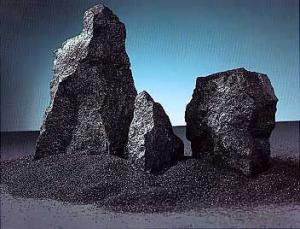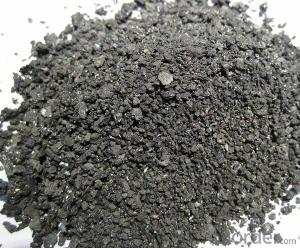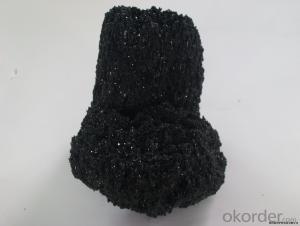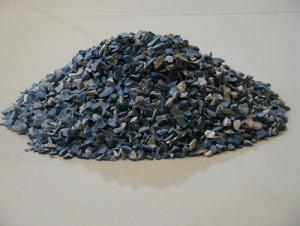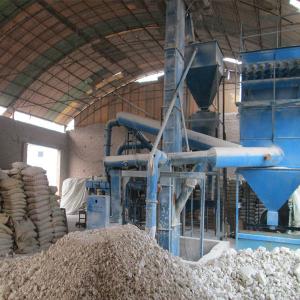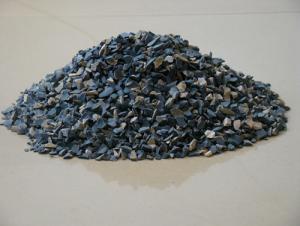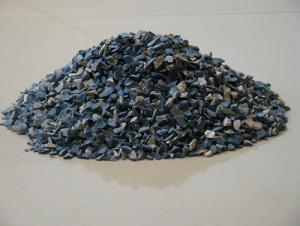Min 98.5% Sic Silicon Carbide for Metallurgical
- Loading Port:
- Tianjin
- Payment Terms:
- TT OR LC
- Min Order Qty:
- 25 m.t.
- Supply Capability:
- 3000 m.t./month
OKorder Service Pledge
OKorder Financial Service
You Might Also Like
Min 98.5% Sic Silicon Carbide for Metallurgical
1.Structure of Silicon Carbide Description
Black Silicon Carbide is produced with high temperature in a electric resistant furnace from a mixture of quartz sand and petroleum coke.
Black silicon carbide is typically used for working on cast iron ,non-ferrous metals, stone, leather, rubber, and other materials which requires sharp cutting characteristics. The mineral is also used widely as a refractory material and metallurgical additive.
2.Main Features of Silicon Carbide
Its hardness is between that of fused alumina and synthetic diamond and mechancial intensity of it is also greater than that of fused alumina. It is brittle and very sharp and has a certain degree of electrical and heat conductivity.
3.Main usage of Silicon Carbide
1.Grinding non-ferrous materials, rock, stone, leather, rubber, finishing tough and hard materials
2.Bonded abrasive tools, lapping and polishing
3.Widely used as a metallurgical additive and refractory material
4.Refractory
4. Silicon Carbide Images
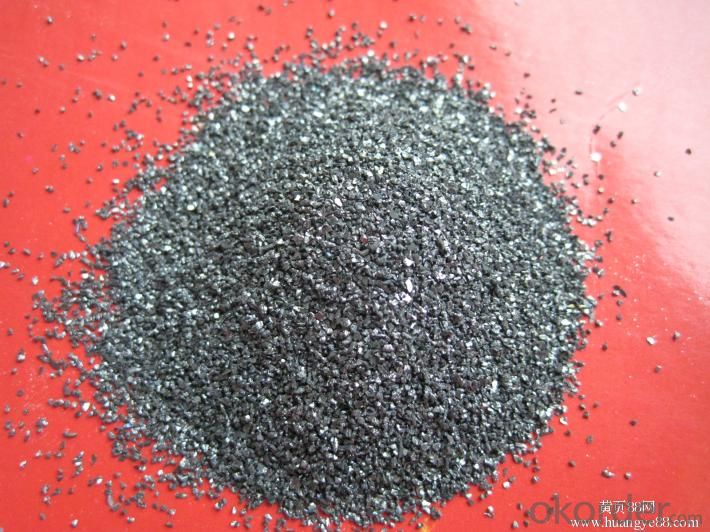
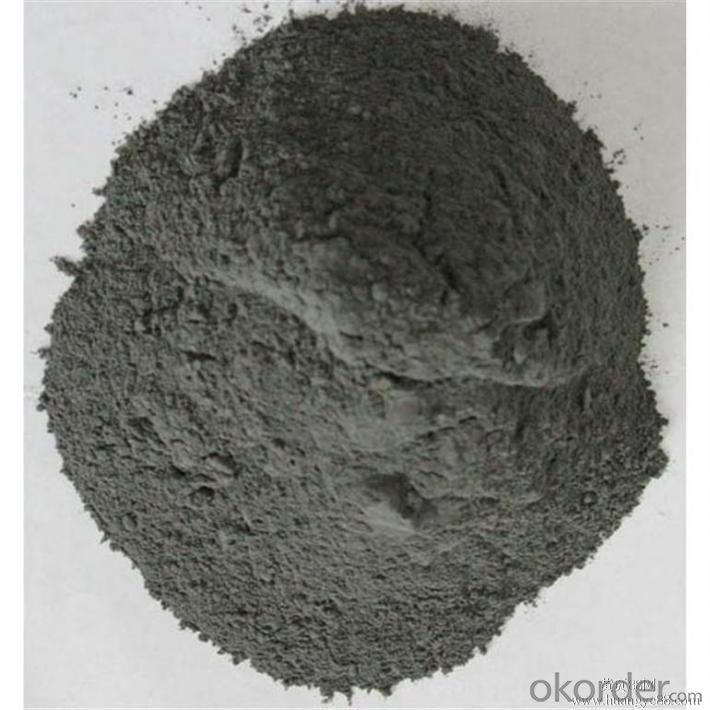
5. Silicon Carbide Specification
Item | composition(%) | |||
SiC | C | TFe | H2O | |
≥ | ≤ | |||
SiC95 | 95.0 | 3.0 | 1.0 | 0.5 |
SiC80 | 80.0 | 5.0 | 1.0 | 0.5 |
SiC70 | 70.0 | 15.0 | 2.0 | 0.5 |
6.FAQ of Silicon Carbide
1). Q: Are you a factory or trading company?
A: We are a factory.
2). Q: Where is your factory located? How can I visit there?
A: Our factory is located in Ningxia, China. You are warmly welcomed to visit us!
3). Q: How can I get some samples?
A: Please contact me for samples
- Q:which kind of refractory is commonly used in the industry
- Therefore it is known as special fire-resistant materials, such as yttria, high alumina raw material (sometimes neutral), olivine,which is used for alkalinity furnace, dolomite, and we roughly divided into several categories, beryllia, cerium oxide, these materials have a strong alkaline slag resistance, thorium oxide, lime, serpentine, which is picked from these refractory raw materials. the raw materials of basic refractory materials are mainly magnesia clay and titanium oxide, but because not many sources of raw materials, it can not be widely applied in the refractory industry, and we can analyze which kind of materal is processed by the pulverizer. There are many kinds of refractory materials, rotary?kiln can only be used in particular circumstances. These materials have a variety of slag resistance at different degrees. the main material of special refractories is zirconium oxide. the refractory clay is the most basic and most widely used raw material in the refractory industry.
- Q:How to deiron refractory?
- Deironing refractory can take physical methods into consideration, such as magnetic?separation, reselection, etc. And it can also take chemical methods, such as flotation.
- Q:What are the characteristics of thealuminium oxide refractory?
- Alumina refractory are characterized by uniform granularity, mobility, good dispersity. And it has good acid and alkaline slag erosion resistance, high strength, abrasion resistance, high melting point, erosion resistance , anti-flush and excellent thermal shock resistance.
- Q:What kind of refractories do the anode baking furnace use?
- Usually the clay refractory bricks will be able to meet the requirements
- Q:Does anyone know what kind of light fireproof materials are there?
- 二, 1, Gypsum plaster board With the building plaster as main raw material, gypsum plaster board is a kind of processed plate made by a special board for protective with an addition of additives and fibers as board core. Gypsum plaster board is characterized by light weight, sound insulation, heat insulation, strong processing performance and simple construction method. 2, Gypsum block Gypsum block is a kind of lightweight building gypsum product which is mainly made of building gypsum, and by adding water, stirring, casting and drying. During the process, , the fiber reinforced materials or light aggregates are allowed in, and the foaming agent can also be added. It has many advantages, such as sound insulation and fire prevention, convenient construction and so on. It is a kind of new and healthy wall material which produces low carbon, enhances environmental protection, and caters to the the times. 3, Fly ash brick is a new type of wall material, and bulk density is one of the main technical indexes. The weight of bulk density can be controlled according to the need of construction and adjustment of technical formula. The dry bulk density of the fly ash brick is about 1540 to 1640 kg / m 3, slightly lighter than the clay brick (1601800 kg /m 3). The flexural and compressive strength of fly ash brick is mainly determined by the production process, the formula and the hydrothermal synthesis reaction mode as well as the need of construction. According to the standards of architectural material industry (JC239 - 2001) released by People's Republic of China, the average value of the flexural strength is 2.5 ~ 6.2Mpa, compressive strength is between 10 ~ 30Mpa. I hope this will be helpful to you
- Q:Graphite and other carbon materials may be oxidized to CO or CO2 at high temperatures. But why can they be refractories?
- There is no contradiction for this. Any substance can be combustible, but different materials have different ignition points.There are many types of graphite. Pyrolytic graphite has a much lower ignition point. Therefore, as long as it reaches at a certain temperature, it can convert into graphite. Mostly, in practical applications (such as brake pads will add a certain amount of graphite), graphite is required to have refractoriness of below 1000 ℃. Graphite can serves as both the combustible and refractory material. So, it can be used as a fire-resistant and high-temperature-resisrant material because graphite (lamellar graphite) has a ignition point of at least 3000 degrees in an oxygen free condition. The above information is for reference only and is offered by Xin Ruida Graphite Company.
- Q:Why the corundum can be used as refractory
- It can resiatant to friction wear.The alumina material is a kind of neutral material with high temperature resistance, anti-acid, anti-corrosion, alkali resistance, and high hardness of corundum. The disadvantage is the poor thermal shock resistance, the main chemical composition of corundum is aluminium oxide and the melting point of corundum is 2080 degrees
- Q:How long is the fire-resistant time of fireproof wooden door?
- fire endurance class A (1.5 hours), class B (1.0 hours), class C (0.5 hours).
- Q:What are the differences and connections between softening temperature of the refractory under a fixed load and thermal resistant creep property of the refractory?
- The result of refractoriness under load is temperature while the result of creep is percentage of deformation. Refractoriness under load and creep can be tested by an instrument. Refractoriness under load reflects the temperature in which the deformation reaches a certain degree under the condition of load. Creep reflects the deformation refractory has under the condition of constant temperature and load. Both refractoriness under load and creep are important criterion for the operating temperature of refractory.
- Q:who knows the uses of refratories?
- Physical properties of refractories include structural properties, thermal properties, mechanical properties, usability and operation. structural properties of refractories include porosity, bulk density, water absorption, air permeability, pore size distribution. Refractory thermal properties include thermal conductivity, thermal expansion coefficiency, specific heat, heat capacity, thermal diffusivity, thermal emissivity. Mechanical properties of refractories include compression strength, tensile strength, anti bending strength, torsional strength, shear strength, impact strength, abrasion resistance, creep property, adhesive strength, modulus of elasticity. Refractories are used in various fields of steel, nonferrous metals, glass, cement, ceramics, petrochemical, machinery, boilers, light industry, power, military and other fields of national economy. They are essential materials that ensures the production run and technological development of the above industries, and play an important role in promoting the developemnt of high temperature industrial production. the usability of refractories include refractoriness, softening temperature under a fixed load, linear?change?on?reheating,thermal shock resistant performance,slag resistance, acid resistance, alkali resistance, hydration resistance, carbon monoxide resistance, conductivity, oxidation resistance.
1. Manufacturer Overview |
|
|---|---|
| Location | |
| Year Established | |
| Annual Output Value | |
| Main Markets | |
| Company Certifications | |
2. Manufacturer Certificates |
|
|---|---|
| a) Certification Name | |
| Range | |
| Reference | |
| Validity Period | |
3. Manufacturer Capability |
|
|---|---|
| a)Trade Capacity | |
| Nearest Port | |
| Export Percentage | |
| No.of Employees in Trade Department | |
| Language Spoken: | |
| b)Factory Information | |
| Factory Size: | |
| No. of Production Lines | |
| Contract Manufacturing | |
| Product Price Range | |
Send your message to us
Min 98.5% Sic Silicon Carbide for Metallurgical
- Loading Port:
- Tianjin
- Payment Terms:
- TT OR LC
- Min Order Qty:
- 25 m.t.
- Supply Capability:
- 3000 m.t./month
OKorder Service Pledge
OKorder Financial Service
Similar products
New products
Hot products
Related keywords
